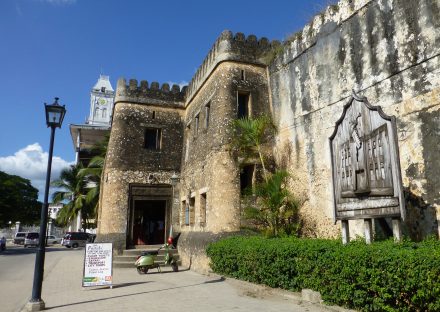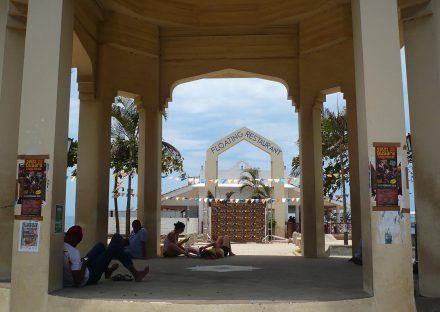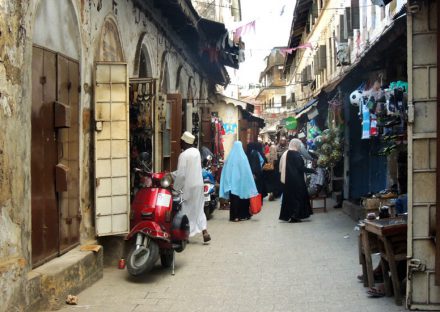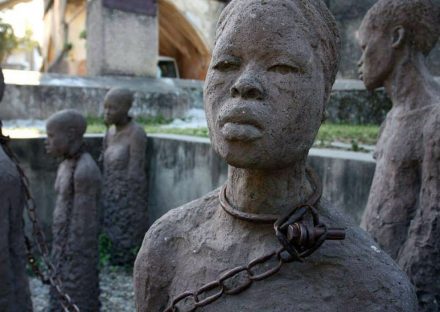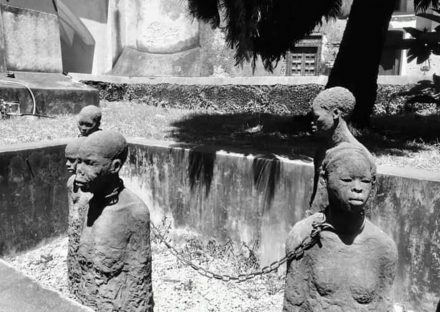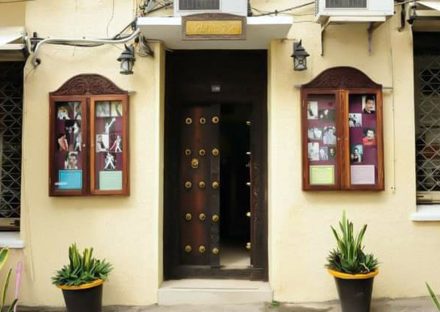- Details
- Itinerary
- Photos
Tour overview
Declared a UNESCO World Heritage Site in 2001, Stone Town is a hotchpotch of cultures, architecture and languages.
Over the centuries, Stone Town has grown from a small fishing village on the peninsula of Unguja’s west coast to a thriving town, with an extraordinary history. From as early as 150AD Arab, Asian and Persian traders sailed across the Indian Ocean to trade with the Bantu people, naming the Africa’s east coast as ‘Zinj el Barr’, meaning land of the black people which later changed to Zanzibar.
Colonial rulers came and went, starting with the Portuguese in the 15th century who built a small settlement, which later grew into Stone Town. The Omani Arabs ousted them and a period of slave, spice and ivory trade began. Zanzibar became predominately Muslim, cloves and coconuts were grown in Stone Town and sold in their tones. The influence of the Arabs was more strongly felt as Seyyid Said bin Sultan made Zanzibar the capital of the Omani empire. The archipelago became a British Protectorate in 1890, with the Sultans implementing policy on a local level. Following the revolution of 1964, Zanzibar became independent and joined hands with the United Republic of Tanganyika to form Tanzania.
Walking around Stone Town, you can see the influence of the different cultures embedded in Zanzibar on the buildings around you and the on the faces of the inhabitants. Coral and stone houses boast imposing Zanzibar doors, with brass studs as a defense against charging elephants and carvings with scriptures from the Qur’an.
Indian houses have courtyards behind the shop fronts and intricately carved balconies. Arab houses are characterized by their white washed walls, flat terraces and small windows to preserve the modesty of the women. The roof top walkways from house to house have been destroyed, so these days the women walk the streets, covered in diaphanous ‘buibuis’. Men sit on the ‘barazas’, the stone ledges outside the house, playing games, talking and greeting visitors much in the same manner they did a century ago.
A SWAHILI RIDDLE
The evolution of huge carved doors as an expression of status and wealth in Zanzibar’s society began in the Swahili era. But it reached its zenith in the nineteenth century due to the buying power of the wealthy Omani Arabs combined with the skill and artistry of Indian carvers.
Richard Burton, when visiting Zanzibar in 1858, commented: “The higher the tenement, the bigger the gateway; the heavier the padlock, the more huge the iron studs which nail the door of heavy timber and the greater the owner’s dignity” The iron studs, mentioned by Burton and still prominent on the doors of modern Zanzibar were a throwback to Indian defenses against war elephants. War elephants may have been unknown in Zanzibar but the door fitted in perfectly with the Arab ideal of a domestic residence that could also serve as a defensive purpose. Many doors had smaller windows or doors built into them to let people pass through them allowing only one visitor at a time.
Apart from their massive and thick construction, the main feature of Zanzibari doors was the decorative carving that adorned the frame, the central pillars and the semi-circular area above the door. Traditionally, a rope or chain pattern ran around the outermost strip of the door to enslave evil spirits and keep the family of the house safe from harm. The inner frame and middle post were carved with abstract motifs such as lotus, rosette patterns, or a decorative theme reflecting the owner’s profession; the owner of a fleet of fishing boats, for example, might choose a pattern of scales.
In later years, the traditional Islamic prohibition of the portrayal of living creatures were relaxed leading to the depiction of lions or eagles in palaces such as the House of Wonders. A door’s carving almost always-included pious verses from the Qu’ran sometimes picked out in gil
Included
- Proffessional Tour Guide
- Bottled water
- All Fees and Taxes
- Entry fees
Not Included
- Lunch
Half Day Trip
The three hours guided tour, begins and end up at your hotel where you will walk/driven to the city market (opened 1904). You will feel the pulse of Zanzibar and hear different dialects being spoken by the people at the market. From there we proceed to the Anglican Church of Christ built by Bishop Steers in 1874 on the site of old slave market.
You will see tiny and dingy room where slaves were kept (Slave Chambers) before reaching the auction table in the Old slave market. Then, you will be driven or walk (optional) to National Museum of Zanzibar (opened 1925), to see many interesting relics from the time of the Sultans and the early Explores.
While, walking along the beach road up to Forodhani Gardens, where you will see the Old British Consulate (the house where the body of late Dr. Livingstone was kept and later sent to Britain), the Arab Fort built (1700), the House of Wonders (built in 1883) National Museum of Zanzibar, High Court Building, Old German Consulate, Africa House (former English Club) Tip Tip House, kelele Square, Old British Consulate, Orphanage Home, Old Fort, Forodhani Gardens, House of Wonders (Current National Museum), Sultan Palace (Palace Museum) former French Hotel in Zanzibar ,Custom House, Old Dispensary, Old Harbor are among the topic of this guided tour in Zanzibar.
Afterwards, a leisure walking through the narrow streets of Stone town (old part of Zanzibar town), where most of the houses date back to more than two hundred and fifty years. In this part of town you will find a lot of exotic small bazaars and shops.

